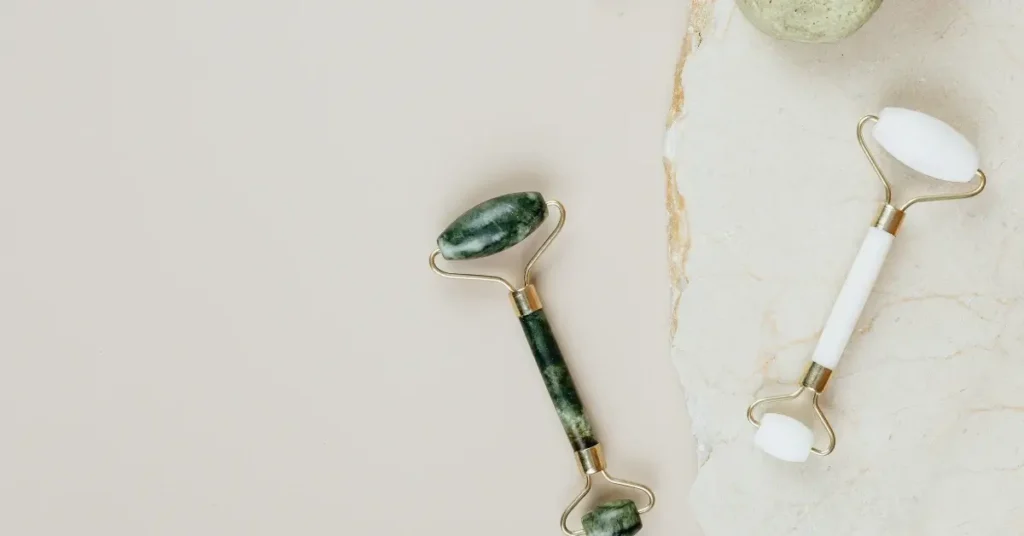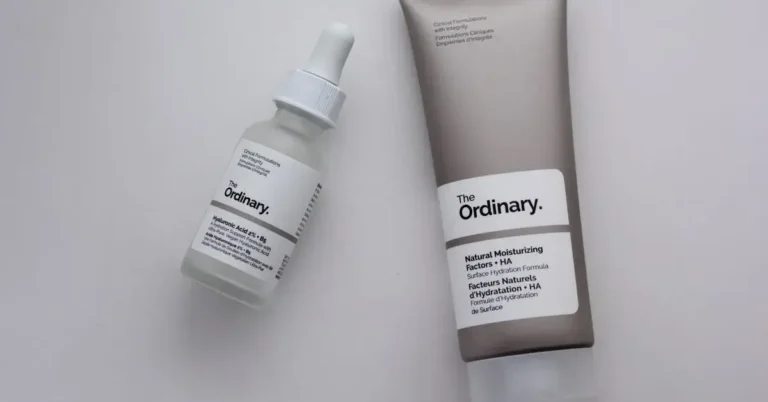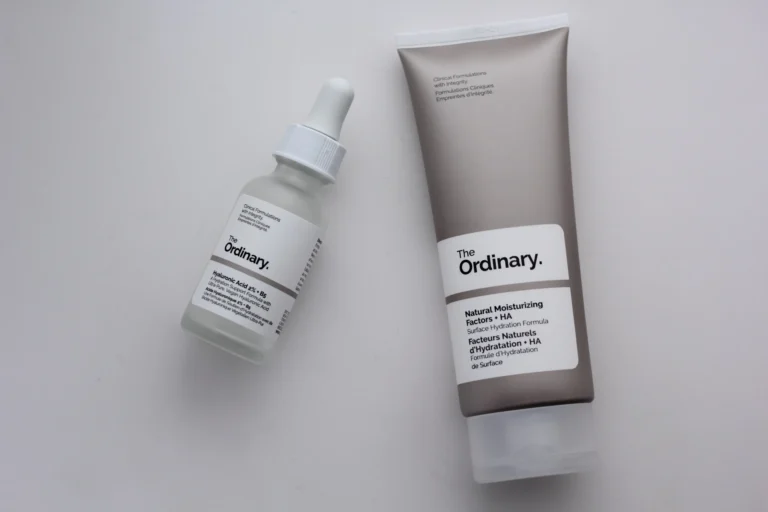Do you have a strong dedication to your skincare regimen and always looking for the best treatments available? If so, take solace in the fact that you’re not alone! We all strive for skin that looks healthy and flawless, and discovering the right products and ingredients plays a key role in making that happen.
Lately, you might have found yourself pondering a burning question: “Can you use retinol with niacinamide and hyaluronic acid?” Look no further, because we have the answers you’ve been searching for!
Imagine unlocking the full potential of your skincare regimen, harnessing the combined power of retinol, niacinamide, and hyaluronic acid. Picture a revitalized complexion, free from worries about potential conflicts between these popular ingredients. Well, get ready to dive into the secrets of this powerful trio and discover how they can work together harmoniously to transform your skin.
Table of Contents
Can You Use Retinol With Niacinamide And Hyaluronic Acid?
To answer the question: Yes, definitely! They can actually complement each other and provide even better results when used in combination
Retinol is a form of vitamin A that is known for its anti-aging properties. It can help reduce fine lines and wrinkles, improve skin texture, and even out skin tone.
Niacinamide, also known as vitamin B3, is another popular ingredient that can help improve the appearance of fine lines, wrinkles, and hyperpigmentation.
Hyaluronic acid: is a hydrating ingredient that can help plump and moisturize the skin.
So, can you use retinol with niacinamide and hyaluronic acid? The answer is yes! While there was once a belief that these ingredients couldn’t be used together, it’s now understood that they can actually complement each other and provide even better results when used in combination.
However, it’s important to use them in the right order and in the right amounts to avoid any potential irritation or adverse effects.
Understanding Retinol
Retinol, a derivative of vitamin A, is a popular ingredient in skincare products due to its ability to improve the appearance of fine lines, wrinkles, and uneven skin tone. As someone who has struggled with acne and hyperpigmentation, I was excited to try retinol as part of my skincare routine.
However, I was also curious about its potential side effects and whether it could be used in combination with other ingredients like niacinamide and hyaluronic acid.
Benefits of Retinol
Retinol is a powerful ingredient that can provide a range of benefits for the skin. Some of the most notable benefits of retinol include:
- Reducing the appearance of fine lines and wrinkles
- Improving skin texture and tone
- Minimizing the appearance of pores
- Reducing hyperpigmentation and dark spots
- Helping to clear acne and prevent breakouts
retinol is the greatest thing kown to mankind
— لُونَا (@interlunaryy) July 30, 2023
Potential Side Effects of Retinol
While retinol can provide significant benefits for the skin, it can also have some potential side effects. Some of the most common side effects of retinol include:
- Dryness and flakiness
- Redness and irritation
- Sensitivity to sunlight
- Peeling and blistering
It’s important to note that these side effects are typically mild and can be minimized by starting with a low concentration of retinol and gradually increasing over time.
Remember: It’s also important to use sunscreen daily when using retinol to prevent further damage from UV rays
Understanding Niacinamide
As someone who has been using skincare products enriched with Niacinamide for a while, I can confidently say that it has become one of my favorite skincare ingredients. Niacinamide is a form of Vitamin B3 that has been proven to be beneficial for the skin. But what exactly are the benefits of Niacinamide? And are there any potential side effects to be aware of? Let’s dive in.
Benefits of Niacinamide
Niacinamide has a range of benefits for the skin, including:
- Reducing inflammation: Niacinamide has anti-inflammatory properties that can help reduce redness and irritation on the skin.
- Minimizing pores: Niacinamide can help regulate the production of sebum, which can lead to smaller pores.
- Improving skin texture: Niacinamide can help improve the overall texture of the skin by increasing collagen production.
- Brightening the skin: Niacinamide can help reduce the appearance of hyperpigmentation, resulting in a brighter complexion.
Potential Side Effects of Niacinamide
While Niacinamide is generally considered safe for most people, there are some potential side effects to be aware of. These include:
- Mild irritation: Some people may experience mild irritation when first using Niacinamide.
- Allergic reactions: While rare, some people may be allergic to Niacinamide and experience an allergic reaction.
Pro tip: To maximize the benefits of Niacinamide, I recommend using it in combination with other skincare ingredients, such as Retinol and Hyaluronic Acid
Understanding Hyaluronic Acid
As someone who has struggled with dry and dehydrated skin, I have always been on the lookout for skincare ingredients that can help me achieve a more hydrated and plump complexion. One ingredient that has been a game-changer for me is hyaluronic acid.
Benefits of Hyaluronic Acid
Hyaluronic acid is a humectant, which means it draws moisture from the environment and locks it into the skin. This makes it a great ingredient for those with dry or dehydrated skin, as it can help to hydrate and plump the skin, reducing the appearance of fine lines and wrinkles.
In addition to its hydrating properties, hyaluronic acid also has antioxidant properties, which can help to protect the skin from environmental stressors like pollution and UV rays. It is also gentle and non-irritating, making it suitable for all skin types.
istg hyaluronic acid is such a life saver, if u have dry and flaky skin, pls. hyaluronic acid. acid may sound harsh but it’s the most gentle on skin.
— 𓆩♡𓆪 (@f1nnnnnnnnnnn) July 29, 2023
Potential Side Effects of Hyaluronic Acid
While hyaluronic acid is generally considered safe and well-tolerated, there are a few potential side effects to be aware of. These include:
- Allergic reactions: Some people may be allergic to hyaluronic acid, which can cause redness, itching, and swelling.
- Over-hydration: In rare cases, hyaluronic acid can cause over-hydration of the skin, which can lead to breakouts or other skin issues.
As always, it’s important to patch-test any new skincare products containing hyaluronic acid and to consult with a dermatologist if you have any concerns.
“Hyaluronic acid is a great ingredient to use in conjunction with retinol and niacinamide. It helps to hydrate and plump the skin, which can reduce the appearance of fine lines and wrinkles. However, it’s important to use these ingredients in the right order to ensure maximum efficacy.”
Dr. Rachel Nazarian
Overall, I have found hyaluronic acid to be a game-changer for my dry and dehydrated skin. It has helped to hydrate and plump my skin, leaving it looking and feeling more youthful and radiant.
Combining Retinol and Niacinamide

Retinol and niacinamide are two popular skincare ingredients that offer unique benefits when used separately. But can you use retinol with niacinamide and hyaluronic acid? The answer is yes! In fact, combining these three ingredients can provide a powerful anti-aging and hydration boost to your skin.
Retinol is a form of vitamin A that helps to reduce the appearance of fine lines, wrinkles, and dark spots. It works by increasing cell turnover and stimulating collagen production.
Niacinamide, on the other hand, is a form of vitamin B3 that helps to improve skin texture, reduce inflammation, and minimize the appearance of pores.
Hyaluronic acid is a humectant that helps to hydrate and plump the skin by attracting and retaining moisture.
When used together, retinol and niacinamide can help to enhance each other’s benefits. Niacinamide can help to reduce the irritation and dryness that can sometimes occur when using retinol. Retinol, in turn, can help to boost the anti-aging benefits of niacinamide by increasing collagen production.
| Pros | Cons |
|---|---|
| Can enhance anti-aging benefits | May cause irritation if used in high concentrations |
| Can help to reduce inflammation and pore size | Can be drying if not used with a moisturizer |
| Can improve skin texture and tone | May take several weeks to see the results |
| Can be used with other skincare ingredients | May not be suitable for sensitive skin |
When using retinol and niacinamide together, it is important to start with a low concentration of retinol and gradually increase it over time. It is also important to use a moisturizer to help prevent dryness and irritation.
Remember: Apply niacinamide before retinol, as niacinamide has a higher pH level and can help to reduce the irritation that can occur when using retinol
Combining Hyaluronic Acid and Niacinamide

Hyaluronic acid is a humectant that is known for its ability to attract and retain moisture in the skin. On the other hand, niacinamide is a form of vitamin B3 that can help to improve the appearance of fine lines, wrinkles, and hyperpigmentation. When used together, they can help to hydrate and brighten the skin, leaving it looking plump and youthful.
| Pros | Cons |
|---|---|
| Hydrates the skin | May cause irritation for some individuals |
| Brightens the complexion | May not be suitable for all skin types |
| Can improve the appearance of fine lines and wrinkles | May take some time to see the results |
To use hyaluronic acid and niacinamide together, applying them in the order of lowest to highest pH is recommended. This means that you should apply niacinamide first, followed by hyaluronic acid. By doing this, you can ensure that both ingredients are able to penetrate the skin and provide maximum benefits.
Combining Retinol, Niacinamide, and Hyaluronic Acid

As someone who is always on the lookout for effective skincare routines, I’ve often wondered whether it’s safe to combine retinol with niacinamide and hyaluronic acid. After all, each of these ingredients has its own unique benefits for the skin. So, can you use retinol with niacinamide and hyaluronic acid?
The good news is that, according to Glam, it’s perfectly safe to use all three ingredients together. In fact, combining them can actually reduce the risk of unwanted side effects such as skin irritation. Retinol, for example, can cause dryness and flaking, but hyaluronic acid can help to moisturize the skin and prevent these issues.
When it comes to layering these ingredients, it’s best to start with hyaluronic acid, as it can bind a high volume of water and keep the skin hydrated throughout the day. Then, apply niacinamide to help regulate sebum production and keep the skin balanced. Finally, apply retinol to help reduce the appearance of fine lines and wrinkles.
It’s worth noting that while these ingredients can be used together, it’s important to start slowly and gradually increase your usage over time. This will help to prevent any potential irritation or sensitivity. Additionally, it’s always a good idea to patch-test new products before incorporating them into your routine.
Overall, combining retinol, niacinamide, and hyaluronic acid can be a great way to achieve healthy, glowing skin. Just remember to start slowly and listen to your skin’s needs along the way.
Benefits
Combining retinol with niacinamide and hyaluronic acid can provide a range of benefits for your skin. As someone who has tried this combination, I can attest to its effectiveness.
Firstly, retinol is known for its anti-aging properties. It can help reduce the appearance of fine lines and wrinkles, as well as improve skin texture and tone.
Niacinamide, on the other hand, can help reduce inflammation and redness, making it an ideal ingredient for those with sensitive skin.
Hyaluronic acid is a humectant that can help hydrate the skin, leaving it looking plump and youthful.
When used together, these ingredients can work synergistically to provide even more benefits. For example, using niacinamide first can help protect the skin from the drying effects of retinol. This can help reduce the likelihood of experiencing irritation or flakiness.
Pro tip: To maximize the benefits of this combination, try using a product that contains all three ingredients. This can help ensure that the ingredients are formulated in a way that works well together and can help simplify your skincare routine.
In summary, using retinol with niacinamide and hyaluronic acid can provide a range of benefits for your skin. From reducing the appearance of fine lines and wrinkles to hydrating and soothing the skin, this combination is definitely worth trying out.
Potential Side Effects
When it comes to combining skincare ingredients, it’s important to know the potential side effects. While niacinamide and retinol can be used together, it’s important to note that they may cause:
- Skin irritation
- Redness
- Dryness
- Flakiness
To minimize the risk of side effects, it’s important to introduce these ingredients into your skincare routine slowly. Start by using them on alternate days and gradually increase the frequency as your skin becomes more accustomed to them. You may also want to consider using a moisturizer or hydrating serum to help counteract any dryness or irritation.
Hyaluronic acid, on the other hand, is a hydrating ingredient that can help to counteract the dryness that may be caused by retinol and niacinamide. It works by attracting water to the skin, helping to keep it hydrated and plump. When used in conjunction with retinol and niacinamide, it can help to minimize the risk of dryness or irritation.
How to Combine: Step-by-Step

Combining retinol with niacinamide and hyaluronic acid can be a great way to achieve healthy, glowing skin. However, it’s important to use these ingredients correctly to avoid any potential irritation or negative effects.
Here’s a step-by-step guide on how to combine these ingredients:
- Start with a clean face: Before applying any products, make sure your face is clean and dry. Use a gentle cleanser to remove any dirt or makeup.
- Apply niacinamide: Niacinamide is a great ingredient for improving skin texture and reducing the appearance of pores. Apply a niacinamide serum or moisturizer to your face and neck, and allow it to fully absorb into your skin.
- Apply hyaluronic acid: Hyaluronic acid is a powerful hydrating ingredient that can help plump up your skin and reduce the appearance of fine lines. Apply a hyaluronic acid serum or moisturizer to your face and neck, and allow it to fully absorb into your skin.
- Apply retinol: Retinol is a powerful anti-aging ingredient that can help improve skin texture and reduce the appearance of fine lines and wrinkles. Apply a retinol serum or moisturizer to your face and neck, being careful to avoid the eye area.
- Use sunscreen: Retinol can increase your skin’s sensitivity to the sun, so it’s important to use broad-spectrum sunscreen with an SPF of at least 30 every day.
Remember, it’s important to introduce new products slowly and carefully to avoid any potential irritation or negative effects. Start by using these ingredients once or twice a week, and gradually increase the frequency as your skin becomes more accustomed to them. And always listen to your skin – if you notice any redness, irritation, or discomfort, reduce the frequency of use or stop using the product altogether.
Can You Use Retinol with Niacinamide and Hyaluronic Acid?: A Recap
Retinol, niacinamide, and hyaluronic acid are all popular skincare ingredients known for their unique benefits. While each ingredient can be used alone, many people wonder if they can be used together for even better results. In this section, I will explore whether you can use retinol with niacinamide and hyaluronic acid, and what the benefits and drawbacks of this combination are.
After researching and consulting with skincare experts, I can confidently say that you can use retinol with niacinamide and hyaluronic acid. In fact, this combination is considered to have numerous benefits. Retinol is known for its anti-aging properties, while niacinamide can help with hyperpigmentation and acne. Hyaluronic acid is a great hydrating ingredient that can help plump up the skin.
To help you better understand the pros and cons of using these ingredients together, I have summarized them in the table below:
| Pros | Cons |
|---|---|
| Retinol can help with anti-aging | Retinol can be irritating and cause dryness |
| Niacinamide can help with hyperpigmentation and acne | Niacinamide may not work well with vitamin C |
| Hyaluronic acid is a great hydrating ingredient | Hyaluronic acid may not work well with some oils |
Personally, I would recommend using this combination, as I have seen great results when using products that contain all three ingredients. However, it’s important to note that everyone’s skin is different, and what works for some may not work for others.
While there are some potential drawbacks to using retinol with niacinamide and hyaluronic acid, the benefits outweigh them. This combination can help improve the overall health and appearance of your skin, and I would encourage you to give it a try.
FAQ

Should you use retinol before or after niacinamide?
Use niacinamide before retinol. Applying niacinamide first allows it to soothe and strengthen the skin’s barrier, reducing potential irritation from retinol.
How long after niacinamide can I apply retinol?
Wait about 5 minutes after applying niacinamide before using retinol. This allows niacinamide to fully absorb and minimize the chance of any interaction between the two ingredients.
Can I use retinol every night?
Using retinol every night may not be suitable for everyone, as it can cause irritation and sensitivity. Start with 2-3 nights per week and gradually increase if tolerated. Always consult a dermatologist for personalized advice.
When should I avoid niacinamide?
You should avoid using niacinamide if you have a known allergy or sensitivity to the ingredient. Additionally, avoid combining niacinamide with vitamin C at the same time, as they might interact and decrease each other’s effectiveness.
What happens when you stop retinol?
When you stop using retinol, the beneficial effects it provides, such as improved skin texture, reduced fine lines, and increased collagen production, may gradually diminish. However, your skin will return to its pre-retinol state, and any irritation or sensitivity caused by retinol will subside.
If you liked this blog article about the question: “Can You Use Retinol With Niacinamide And Hyaluronic Acid In 2023?”, don’t forget to leave us a comment down below to tell us about your experience.





